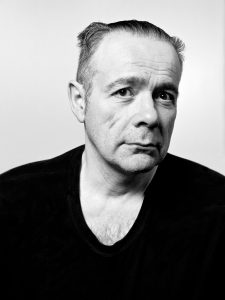Editorial by thierry Ehrmann, Founder and CEO of Artprice.com

Thierry Ehrmann, sculptor, visual artist,
Artprice.com and Server Group
founder & CEO
“Wan Jie, Artron Group Chairman/founder and creator of AMMA (Art Market Monitor of Artron) has summarised his vision regarding the historic contribution his organisation makes to the art world and the art market with these words: ‘Artron.net and Artprice have fully prepared themselves to continue to penetrate marketplace frontiers, seize the pulse of the art consumerist market, impart the culture of art for future generations to come, promote its value and support art so that it may enter into the lives of each and every individual.’
This statement – emphasising the long-term continuity of the alliance between AMMA and Artprice – coincides perfectly with Artprice’s fundamental objectives, which from the early 2000s through the key years of the emergence of our new multipolar world, has actively encouraged international collaboration between the global art market’s key players to create knowledge sharing bridges. In order to achieve this goal, Artprice has not been afraid to build relationships that use the decade as their time scale rather than the Western world’s standard unit of temporal reference, the financial quarter.
We are therefore steadfast partners sharing a knowledge-based philosophy based on mutual respect and trust.
According to Wan Jie, ‘This report is the fruit of the deepening interaction between Asian and Western Art Markets since 2012. Its structure and content are constantly enhanced to cover both markets as thoroughly as possible.’
No other organisation or team is currently capable of processing and interpreting such high quality macro- and micro-economic big data.
In 2016, the Global Art Fine Art Market firmed in the West and returned China to the position of world leader. Moreover, this time, the gap between China and the United States is wider than ever at $1.3 billion.
In view of the state of the global economy and global finances, the Fine Art auction market has demonstrated a level of maturity perfectly commensurate with other alternative investment asset classes. Its total value in 2016 amounted to $12.45 billion.
The art market is today an economic sector in its own right with different yields and performances per segment.
As a whole, the global Fine Art auction market has grown by approximately 291% since 2000. This growth has been largely driven by the market’s globalisation and its attractive economic fundamentals. It has also benefited from an intensification of the West’s premium segment. At a global level, the number of artworks offered in public sales during 2016 rose 8% vs. 2015 to 938,000 lots.
The United Kingdom has retained its third place, with an annual turnover of $2.1 billion in 2016. The total has more than doubled in 10 years, driven essentially by London, now the world’s third marketplace by turnover, with a 16% share of the global market compared with Beijing’s 18% and New York’s 26%.
Despite a particularly adverse economic context, the Western Art Market performed remarkably well based on the dominant indicator used in financial markets: transaction volumes. Compared with 2015, the volume of transactions recorded in the West rose 11%.
Given the context, we were not surprised to see a fall in the number of exceptional masterpieces sent to auction; however this contraction did not prevent the French artist Claude Monet from generating the year’s best Fine Art auction result in 2016 when La Meule fetched $81.5 million. Significantly, this year, the top artist in the Global Top 500 by annual auction turnover was the Chinese artists Zhang Daqian.
Similarly, this year’s percentage of Chinese artists in the top 500 was above 30%, clearly illustrating – in addition to the turnover figures – China’s supremacy vis-à-vis the USA, which only accounted for 15%.
Having driven up the prices of their compatriots in the 2000s, the major Chinese collectors are actively and vigorously diversifying their acquisitions. Aware of changes in their domestic market, they are investing in major signatures of Western art from all periods including Old Masters, Impressionists, Modern and Contemporary art.
The most spectacular auction bids seen in recent years no longer represent the whimsical splashes of headstrong billionaires. Nowadays the purchase of big-name masterpieces is usually the fruit of a carefully planned economic calculation: for the museum industry, works by Gauguin, Modigliani or Van Gogh guarantee global cultural influence and an exponential visitor growth rate.
The major Asian and Middle Eastern buyers are extremely well advised and are continuing their museum building programmes. With more than 700 new museums opening every year, the museum industry has become a global economic reality of the 21st century. More museums opened between 2000 and 2014 than in the previous two centuries.
Demand for museum quality works from this industry has been one of the driving factors in the spectacular growth of the Art Market. Today’s museums are like yesterday’s cathedrals; open to people from all generations and all social classes eager to experience the singularity afforded by artworks in a world of increasing standardisation.
The global ubiquity of the Internet is now a key factor in auction house marketing strategies worldwide, with operators seeking to bolster their market shares on all continents. Of the world’s 6,300 auction houses, 97% are today present on the Internet (versus just 3% in 2005). Mobile Internet is a powerful factor of economic disruption and it is prompting auction operators to modify their traditional business models. All the major operators (including Christie’s and Sotheby’s) of course, plus practically all the minor operators are now convinced that Internet is their future. In 2016, Internet-based secondary market sales turnover of Fine Art posted an increase of more than 110%.”






 0
0
